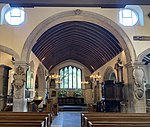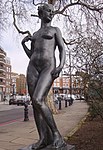Inq Mobile

Inq was a social software and app manufacturer who launched two successful software products and a series of award-winning handsets. Material, Inq's personalised magazine, became the top free news app in the UK App Store and achieved a number 4 position in the US, shortly after launch. SO.HO, a social launcher developed by Inq, was also warmly received with press positioning it as an alternative to Facebook Home.Prior to focusing on software, Inq released a series of "social mobiles" for which they were awarded "Best Newcomer" and "Best Handset" at the GSMA in 2009.In January 2014 Inq announced that the business was to close down and that the apps they had in market would not be updated after this point.
Excerpt from the Wikipedia article Inq Mobile (License: CC BY-SA 3.0, Authors, Images).Inq Mobile
Hester Road, London Battersea (London Borough of Wandsworth)
Geographical coordinates (GPS) Address Nearby Places Show on map
Geographical coordinates (GPS)
| Latitude | Longitude |
|---|---|
| N 51.4799 ° | E -0.1696 ° |
Address
Albion Riverside
Hester Road
SW11 4AN London, Battersea (London Borough of Wandsworth)
England, United Kingdom
Open on Google Maps











